Microbats At Long Grass
By Peter Richards from Long Grass Wiildlife Refuge and Bats Qld
 In previous years Gabi and I have had microbats come in to care and those that did we had little success with. We became quite somewhat despondent about the prospect of rearing more microbats only for them to die after a couple of weeks. This year however has been different. Since the beginning of December 2011 we took 9 microbats into care and lost two of them. One of the deaths was pretty well unavoidable. A bat that was passed on to us from Australia Zoo as simply requiring a rest before being released turned out to be paralysed and had multiple injuries. The second death was a 3g furless baby that survived for 27 days and then succumbed to what I think was inhalation pneumonia after she was switched from syringe feeding to lapping as she had a habit of putting her whole nose in the milk. I will stick with syringe feeding these young ones from now on.
In previous years Gabi and I have had microbats come in to care and those that did we had little success with. We became quite somewhat despondent about the prospect of rearing more microbats only for them to die after a couple of weeks. This year however has been different. Since the beginning of December 2011 we took 9 microbats into care and lost two of them. One of the deaths was pretty well unavoidable. A bat that was passed on to us from Australia Zoo as simply requiring a rest before being released turned out to be paralysed and had multiple injuries. The second death was a 3g furless baby that survived for 27 days and then succumbed to what I think was inhalation pneumonia after she was switched from syringe feeding to lapping as she had a habit of putting her whole nose in the milk. I will stick with syringe feeding these young ones from now on.
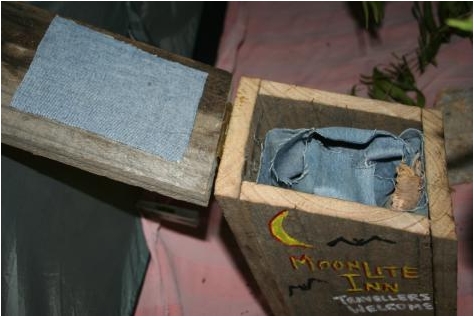
We also constructed a couple of bat boxes using a variation on a design downloaded from www.bats.org.au. The plan was modified so that it could be free standing in the bat tent during the rehab period and then wall mounted at the time of release. I also used metal hinges rather than the suggested strip of rubber as it made a much more weather proof and stable lid. The box in the photo was the second one I made and is very easy to construct and seems to be very popular with the bats.
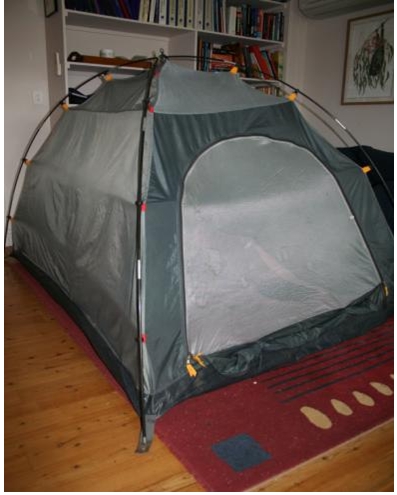 The photo shows the box setup on the inside of the bat tent.
The photo shows the box setup on the inside of the bat tent.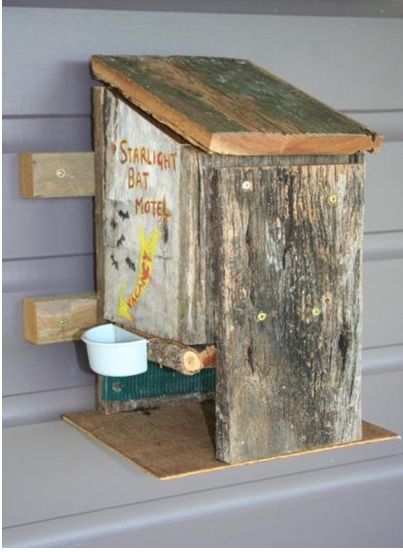 The star of the season is definitely Zephyr, a Little broad-nosed bat, who Gabi raised from a 3g, furless baby through to 9g at which stage she was released after 57 days in care. She now lives in a bat box on our front veranda and comes in each day for a couple of meal worms to help her on her way. Shortly after release she disappeared for 10 days but since then has been present every day. Released together with Zephyr were 3 Eastern freetail bats, Beeza after 22 days in care, MV Agusta after 16 days in care and Woody after 5 days. The freetails all departed the bat box fairly quickly but were all in good health and had been kept together as a group prior to release.
The star of the season is definitely Zephyr, a Little broad-nosed bat, who Gabi raised from a 3g, furless baby through to 9g at which stage she was released after 57 days in care. She now lives in a bat box on our front veranda and comes in each day for a couple of meal worms to help her on her way. Shortly after release she disappeared for 10 days but since then has been present every day. Released together with Zephyr were 3 Eastern freetail bats, Beeza after 22 days in care, MV Agusta after 16 days in care and Woody after 5 days. The freetails all departed the bat box fairly quickly but were all in good health and had been kept together as a group prior to release.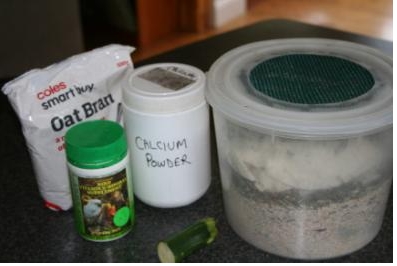 A second box with the same food mix holds the beetles that emerge after the worms pupate. A couple of pieces of paperbark form a good surface for the beetles to lay their eggs. This ensures that we have an on-going supply of worms without having to pay the exorbitant prices at the pet food shops.
A second box with the same food mix holds the beetles that emerge after the worms pupate. A couple of pieces of paperbark form a good surface for the beetles to lay their eggs. This ensures that we have an on-going supply of worms without having to pay the exorbitant prices at the pet food shops.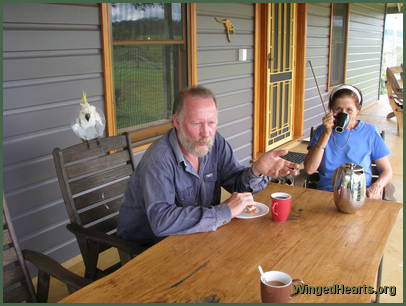
Peter Richards and Gabrielle Friebe run the Long Grass Wildlife Refuge Centre and have been caring for wildlife for over 35 years.
Related Articles:
Building Bathouses for Microbats

 del.icio.us
del.icio.us Digg
Digg Facebook
Facebook Google
Google Google+
Google+ LinkedIn
LinkedIn MySpace
MySpace Ping This!
Ping This! SlashDot
SlashDot StumbleUpon
StumbleUpon Twitter
Twitter Yahoo
Yahoo



